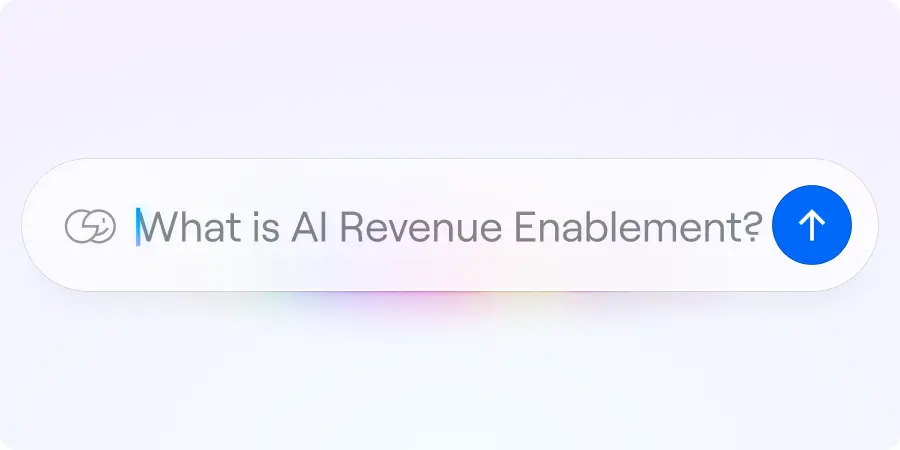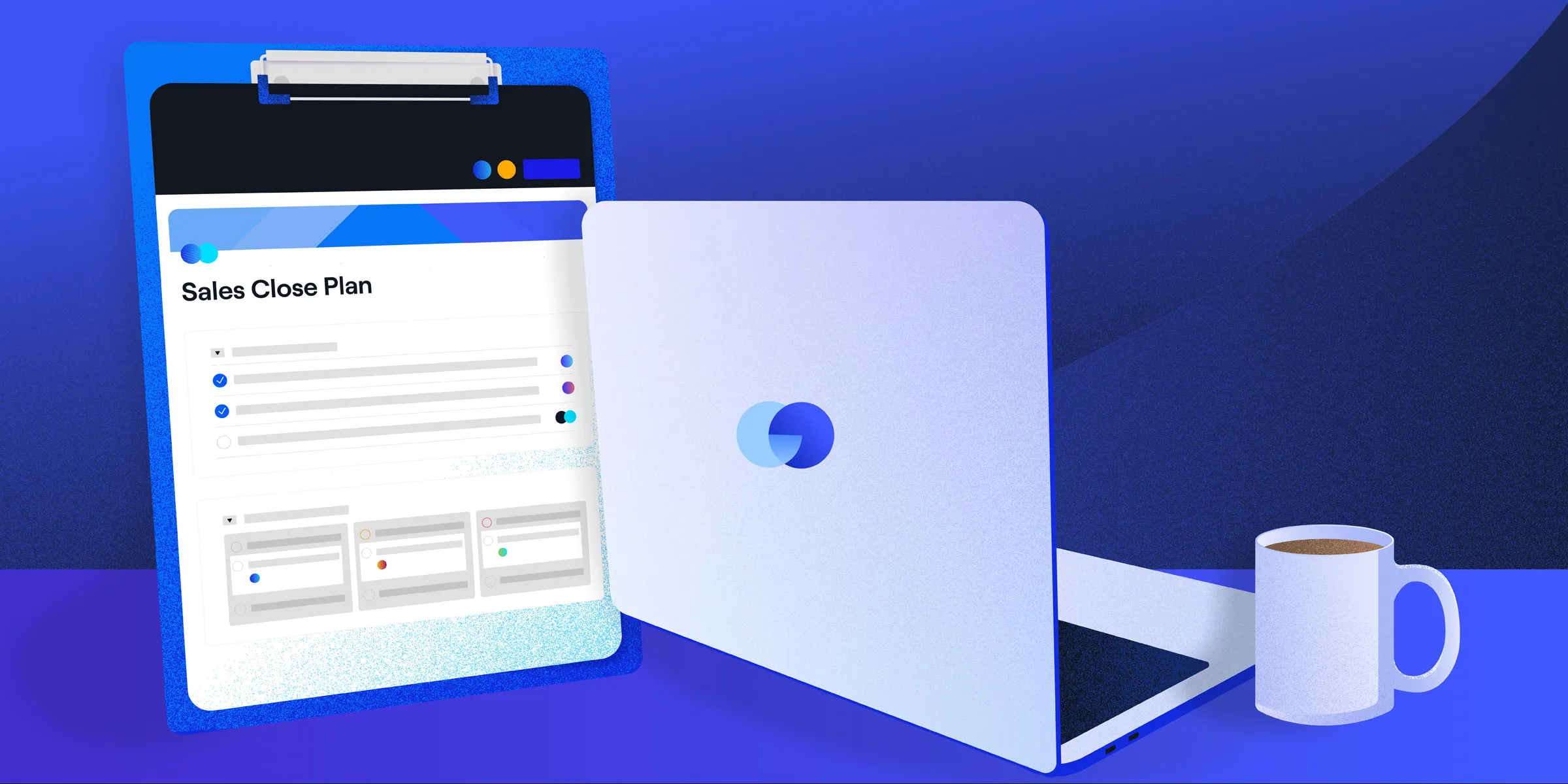Product
TABLE OF CONTENTs
TABLE OF CONTENT
Mid-market deals are “the messy middle."
They aren’t as straightforward or transactional as SMB sales, where rapid decisions and quick turnarounds reign.
But neither are they the long slog of rigid, bureaucratic processes of enterprise dealings.
This messy, middle market brings its own set of challenges and opportunities for sales teams.
For SaaS sales leaders and founders, this presents a pressing question: Is navigating the mid-market segment the right move? Does it offer strategic advantages or just introduce unnecessary challenges.
In this post, we’re diving into the intricacies of mid-market sales, including the benefits, inherent challenges, and actionable strategies that can turn this messy middle into a potential goldmine of opportunities.
What is mid-market sales?
Mid-market sales refers to selling products or services to medium-sized businesses. These companies typically have between $50 million and $1 billion in annual revenue and 200 to 1,000 employees.
Because of this, they have more complex needs and larger budgets than small businesses while still maintaining greater flexibility and shorter decision-making chains than larger companies.
How and why mid-market prospects buy
Compared to the world of transactional SMB sales, mid-market buying decisions require a more consultative selling approach that is rooted in establishing trust, credibility, and genuine relationships.
The average B2B mid-market sales process is more involved than SMB, has more decision makers, and generally takes 2-6 months to close a deal.
Andy Sietsema, Senior Account Executive at Dock, adds, “Mid-market requires a lot more patience, whereas SMB requires protecting your time and getting people in and out as fast as possible so you can move on to the next ones. And if they're not moving that quickly, then they're probably not the right fit or not worth the time.
“Whereas a mid-market company is going to be worth the time to be patient and to really make sure that the presentation and the proposal are nice and buttoned up before they make a decision.”
Mid-market vs. SMB sales
While there are many similarities between selling to SMBs and the mid-market, there are some important differences to be aware of when moving upmarket:
- Longer sales cycles. Small businesses often make decisions faster, while mid-market companies might take longer due to their larger size, more decision-makers, and more bureaucracy.
- Larger budgets. SMBs are usually more price-sensitive and have tighter financial constraints compared to mid-market companies. While mid-market companies have more budget, the actual purchasing processing can be involved as you start dealing with things like procurement and SOC 2 compliance.
- Longer decision-making processes. With an SMB, there’s often only one decision-maker. So, once you have sold that person on the solution, you can move quickly. That’s not the case in mid-market companies where there are usually multiple stakeholders. You also have to weigh competing priorities from stakeholders who will be using your product all the time vs. other stakeholders who control the budget but might never experience the product.
- Deeper functionality. With SMBs, many are looking for all-in-one solutions that do a decent job at everything whereas mid-market needs deeper functionality, so they string more solutions together.
Mid-market vs. enterprise sales
Both mid-market and enterprise sales share certain core principles like building relationships, consultative selling, and getting buy-in from multiple stakeholders.
However, they also have their differences:
- Shorter sales cycles. Enterprise sales cycles are typically even longer and more complex than mid-market sales. Mid-market companies, though deliberate in their evaluation, tend to move faster than large enterprises. It is not uncommon for a large enterprise sale to take a year or longer to close.
- Shorter purchasing processes. Enterprises have formal procurement teams, strict security reviews, and established buying protocols, which can make the process more bureaucratic and much longer.
- Less customization. Mid-market companies often lean towards scalable and collaborative solutions that cater to team requirements. Enterprises, on the other hand, might have more specialized needs, demanding highly customized solutions that integrate with their existing infrastructure.
- More risk averse. Enterprise clients might already be established market leaders. They are less likely to take risks on a newer software company. This means they are more likely to want to maintain their position in the market, even at the expense of growth.
Mid-market sales benefits
Mid-market companies strike the perfect balance for many startups, since they have bigger budgets compared to SMBs but still maintain the agility and flexibility that larger enterprises often lack.
Here are some additional benefits to selling to mid-market companies.
- Flexible buying processes. Mid-market companies usually have less stringent buying requirements compared to enterprises. This means they may not have formal procurement teams, strict security reviews, or established purchasing protocols. While this can make the buying process messier, it also presents an opportunity for salespeople to guide and shape the buying journey.
- Team-centric. Unlike smaller businesses that may focus on individual needs, mid-market companies are more driven by team requirements and platform solutions. They are on the lookout for software that offers team collaboration features, supports multiple users, and can cater to their growing needs. However, they don’t usually need as many rigid requirements as enterprise companies.
- More upside. Mid-market companies are often in a phase of rapid expansion. By partnering with them, your team can grow alongside these businesses, leading to larger contracts, upsells, and long-term loyalty as the company's needs evolve.
- Opportunity for consolidation. As mid-market companies grow, they often find themselves juggling multiple software solutions. This presents a unique opportunity to expand horizontally into their service or tool stack.
- Faster decision-making. While they have more structure than small businesses, mid-market companies often have shorter chains of command than large enterprises. This can lead to quicker decision-making processes, allowing for faster sales cycles compared to selling to massive corporations.
Mid-market sales challenges
Going from transactional selling to SMBs to selling to mid-market companies can be a big adjustment. Here are some of the challenges that your sales reps may face in the process.
- More financial constraints. Mid-market companies have more budgets than SMBs. However, they still operate with financial constraints. So, you’ll need to get good at clearly communicating the ROI of your solution, as well as being willing to experiment with flexible pricing models, such as discounts, bundles, or phased payment options.
- Multiple decision-makers. Identifying all key players early in the process and tailoring pitches to their individual concerns is necessary. Managing group dynamics can get messy when you start having to communicate with some stakeholders who will be in the product every day vs. others who just control the budget. How a salesperson navigates these dynamics can often make or break a deal.
- Diverse needs and challenges. There are rarely cookie-cutter solutions for mid-market sales. Conducting thorough market research and a consultative sales approach can provide insights into these specific needs.
- Balancing new deals with customer success. While acquiring new clients is crucial, post-sale support cannot be neglected. Implementing a dedicated customer success team with a smooth handoff ensures existing clients receive continuous attention. Regular check-ins, training sessions, or product updates can also help maintain and strengthen the relationship.
- Handling setbacks. Cultivating a resilient mindset and viewing setbacks and rejections as learning opportunities can be beneficial. Actively seeking feedback after unsuccessful pitches can provide insights for refinement and improvement.
Traits of a great mid-market salesperson
It is far more common to see SMB salespeople transition successfully to mid-market sales, like Andy, than to see enterprise salespeople move down market. That’s because many of the traits of a great SMB salesperson translate better to mid-market sales, including:
- A high degree of emotional intelligence
- Empathetic
- Great at building rapport and relationships quickly
- Patient
- Adaptable
- Can think quickly on their feet
- Focused on value-driven or consultative sales
- Continuous learners
- Service-oriented
- Resilient
SMB and mid-market sales are relationship-focused. You need to be great at building rapport quickly and willing to adapt to the sales process on the fly. That’s not often the case in enterprise sales, where the best enterprise salespeople are great at navigating rigid sales processes and handling lots of red tape and bureaucracy.
Actionable sales advice to close more mid-market deals
It is one thing to read about the benefits and challenges of mid-market sales. It is another to actually close these deals. So, we reached out to a handful of founders and account executives to get their best mid-market sales advice.
Have a system for qualifying leads
This is at the root of all sales. However, it is crucial to not only identify and understand each decision-maker but also grasp their unique challenges.
Initially, this will make it easier to qualify for opportunities faster, so you aren’t wasting time on deals that will never close. In our experience, the MEDDIC or Sandler Sales methodologies can streamline the discovery process.
Then, once you qualify that they are a great fit, it makes the process of selling to them easier.
"It's not just about pushing a product," said Andy. "It's about understanding what keeps these business leaders up at night and finding ways to alleviate those concerns."
By diving deep into their specific needs and pain points, you can tailor your pitch to address the concerns and objectives of each stakeholder. This can significantly improve the chances of a successful sale.
Build genuine relationships
Building rapport quickly and then maintaining genuine, long-lasting relationships is paramount.
Andy said, "It's all about trust. If they don't trust you, they won't buy from you."
This trust is cultivated through honest and transparent communication, integrity, and mutual respect.
For instance, instead of using high-pressure sales tactics to move a stalled deal forward faster, an AE can lead with patience, empathy, and helpfulness. This often looks like getting in front of potential objections by asking questions.
Be patient, but proactive
One of the biggest differences between SMB and mid-market sales is that deals take longer, and there isn’t a defined, rigid process like in enterprise sales. You aren’t going to close a mid-market deal in a week.
"These aren't quick wins," said Andy. "You might be in for the long haul, but the rewards are worth it."
But if you let the prospect lead the sale, it might stall or never close.
That’s why it is important to have a mutual action plan (MAP). A MAP introduces structure and deadlines for the buyer’s side, which helps create a sense of urgency and maintain deal velocity.

In addition, David Godlewski, CEO of Intelliverse, recommends, “Trusting the process and avoiding rushing prospects. Rushing can harm trust and derail deals. Instead, focus on building strong relationships, understanding their needs, and consistently aligning your solutions with their goals.
“Use the extended timeline to your advantage by providing ROI projections that emphasize your solution's value. Patience, combined with persistent commitment, positions you as a trusted partner and increases your chances of closing deals.”
Practice value-driven selling
You want to position yourself as a trusted advisor, not a salesperson. A value-based selling approach not only helps in sealing the deal but also in differentiating your approach from your competitors.
Andy said, "It's not about what you're selling, but how it can transform their business.”
One way to be seen as a trusted advisor is by surfacing sales enablement resources at the right time.
For instance, Normand Chevrette, President & CEO of CME Corp, suggests that you “offer personalized ROI calculations to highlight the value of your product or service. Rather than relying on generic estimates, focus on gathering specific data directly related to the prospect's challenges and objectives. From there, you can create a persuasive story around the ROI, not just through numbers but by illustrating how your solution can transform operations and boost profits.”
The challenge with sharing lots of resources with a customer is that things quickly start to feel messy. Email attachments get lost. Dozens of links don’t get clicked.
That’s where Dock’s digital sales rooms (DSRs) can help. Dock gives you one place to embed all your enablement content, action plans, and partnership information. As the deal progresses, you can always point your customer back to one shareable link — rather than piling up tons of resources in their inbox.

Share social proof
The power of social proof cannot be underestimated. Andy shared, "When I show them success stories from companies just like theirs, their eyes light up."
That’s because the sales content, testimonials, and case studies you surface should align with your prospect’s priorities, wants, and needs. This instills confidence and showcases the tangible benefits of your product.
The more segmented, the better. For example, at Dock we’ve created two categories of case studies for a sales audience a customer success audience. Over time we’ll drill that down even more by company size, industry, etc.
Be flexible with pricing
While mid-market companies aren’t as price-sensitive as SMBs, they still have financial constraints.
"Sometimes, it's about finding that sweet spot in pricing," Andy mentioned. “Being open to negotiations, offering discounts, or bundling services can make the proposition more enticing.”
For example, you can offer a bundling discount if they buy multiple products. You can also introduce a deferred payment option or a year-long commitment of monthly payments, which allows a prospect to see value quickly, eliminate some of the switching risks and make your prospect feel like they are getting a great deal.
Flexibility in pricing strategies can be the key to sealing a deal, especially when the perceived value aligns with the investment.
Stay organized
When you are working on multiple deals with longer sales cycles, staying organized is key.
"A good CRM system is your best friend,” said Andy. “It keeps me on track and ensures no opportunity slips through the cracks. Leveraging tools and systems to keep track of interactions, follow-ups, and crucial account details can streamline the sales process and improve efficiency.”
Additionally, working in conjunction with marketing to surface the right content to prospects at the right time can keep prospects engaged.
The challenge for sales teams is that this normally happens ad hoc. Marketing assets pile up in a Google Drive folder, in Slack threads, or in an internal wiki that nobody ever checks.
Dock’s Content Management platform helps marketing teams organize content for their sales team to make it:
- easy to find content
- easy to share with customers
- easy to track who engages with it
Teams can also build templated Dock workspaces for each customer segment with hand-picked content most suited to that audience.
Going back to our CRM example earlier, this might look like providing specific case studies around how other customers use both the inventory management and CRM options when you introduce the bundling strategy option.
Provide excellent post-sale support
The relationship doesn't end once the sale is made. How you support them post-sale can make or break future renewal and expansion opportunities.
This starts with going above and beyond to ensure a smooth handoff from their account executive to your customer success team. This should be a high-touch process.
And having a collaborative workspace, like Dock, for customer onboarding ensures that you are on the same page and no one drops the ball.
So, you can use it to facilitate a smooth handoff between sales and customer success ensuring that all key customer relationship details, contact, information, timelines, and summaries are in one place.

Plus, you can customize the layout of your workspace as needed to suit the changing nature of your relationship.
Build your repeatable mid-market sales process with Dock
Selling to midsize companies can be a great way for a startup to move upmarket, but it's paramount to first understand your personas inside and out and grasp the unique intricacies of these businesses.
Approaching mid-market companies demands a tailored, repeatable sales process that centers on cultivating deep relationships with decision-makers, demonstrating value, and ensuring long-term growth potential. It's a refined approach to selling that zeroes in on long-term partnership value rather than just immediate contract size.
That’s why a systematic and scalable selling process is essential and where Dock can help.
Dock empowers you to seamlessly transition from one deal to the next, ensuring each prospect feels understood and valued. Our shared workspaces guarantee that essential content is always at your prospects' fingertips while you maintain control of guiding the sales process.
To see how you can optimize your mid-market sales strategy and win more deals, start your free trial or schedule a demo today.




































